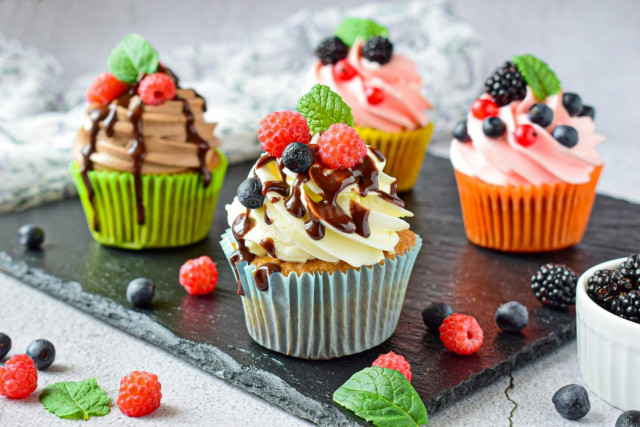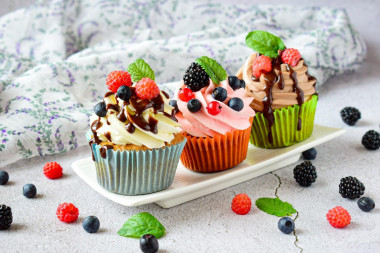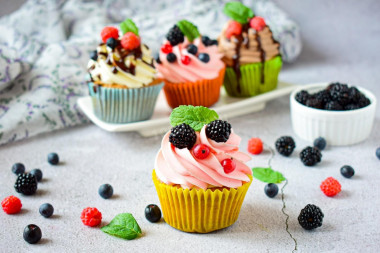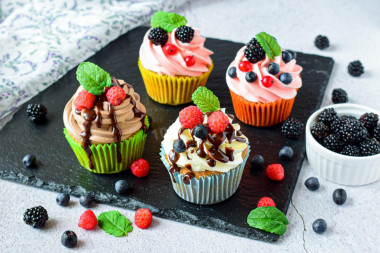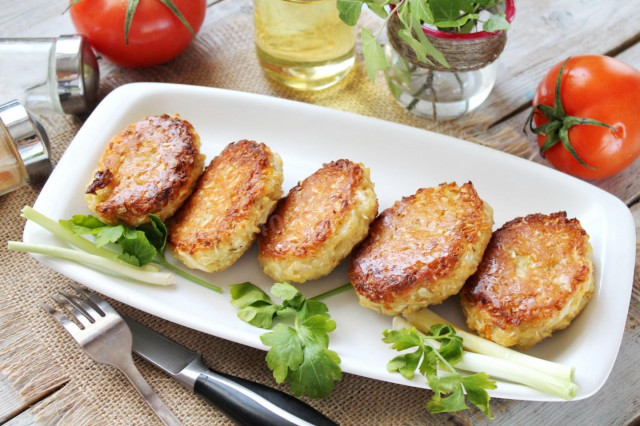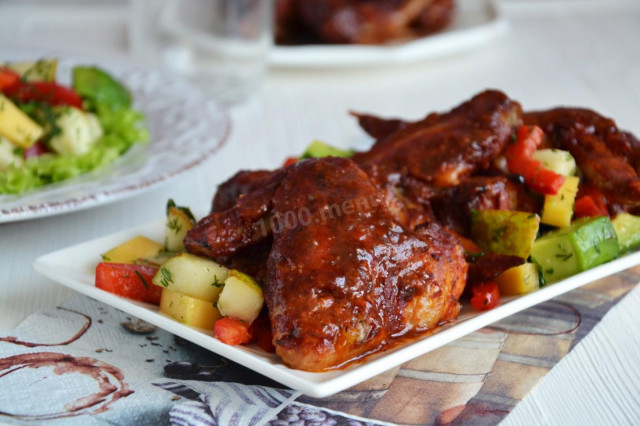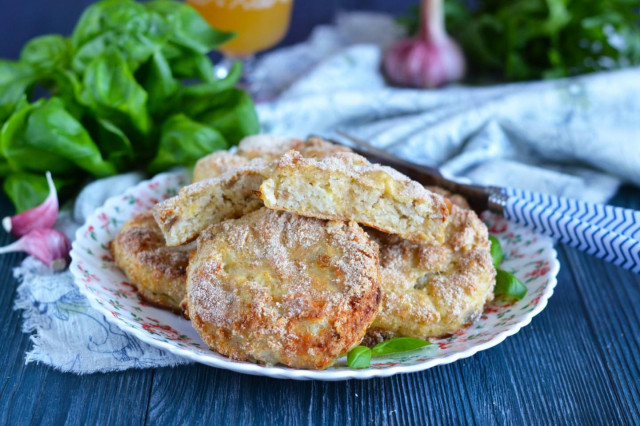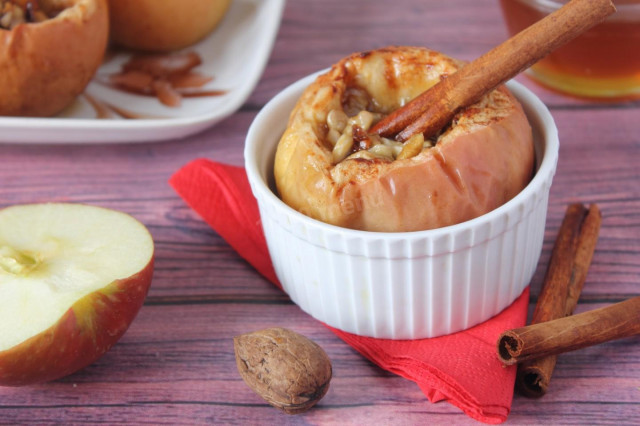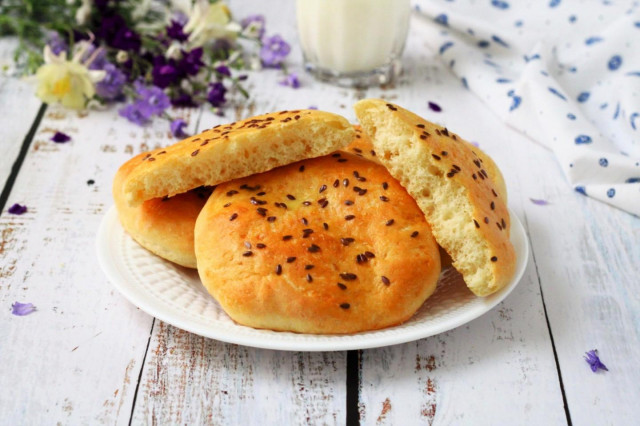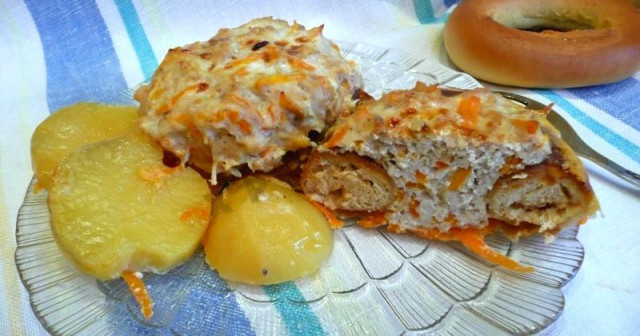Composition / ingredients
Step-by-step cooking
Step 1:
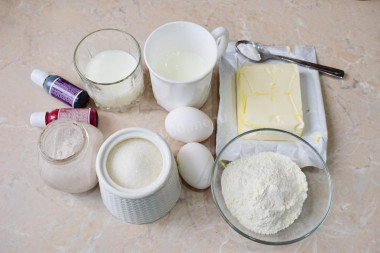
How to make sponge cakes in silicone molds? Prepare the necessary ingredients for this. I use eggs of category C1. Milk can be taken of any fat content.
Step 2:
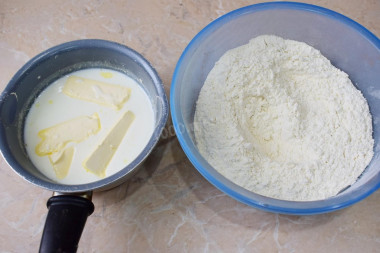
Combine milk and butter in a ladle, put on fire and bring to a boil. Sift the flour through a sieve to fill it with oxygen. Thanks to sifting, the finished cupcakes will be more lush. Combine the sifted flour with soda and vanilla.
Step 3:
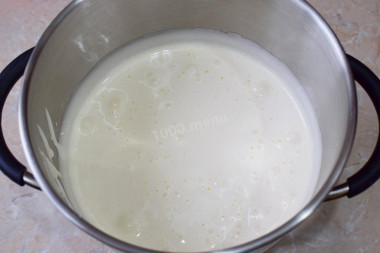
Combine the eggs with sugar and beat at the maximum power of the mixer for a few minutes so that they turn into a fluffy white mass.
Step 4:
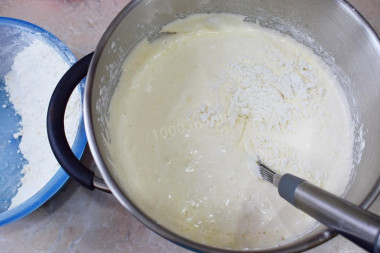
Alternately add flour and milk mixture to the beaten eggs. With a whisk, knead the dough by hand. You may have more or less flour, take this into account, focus on the consistency of the dough. It should not be too thick, it will look like moderately liquid sour cream
Step 5:
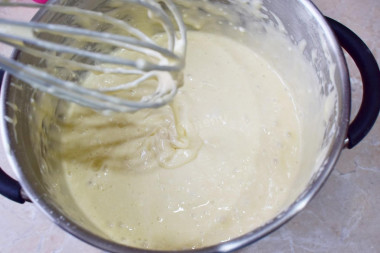
The dough should not lose its splendor from beaten eggs.
Step 6:
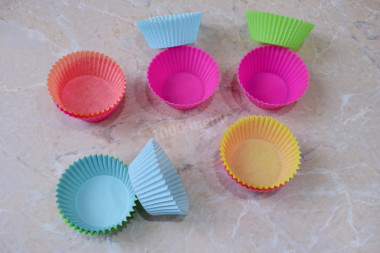
Prepare silicone molds and paper capsules for baking cupcakes. Insert the paper capsules into the silicone molds.
Step 7:
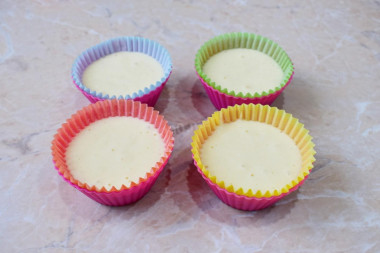
Fill the molds with dough before reaching the top. Approximately 2/3 of the volume of a paper capsule. Place in the oven, preheated to 180 degrees, for 20-35 minutes. When baking, be guided by your oven.
Step 8:
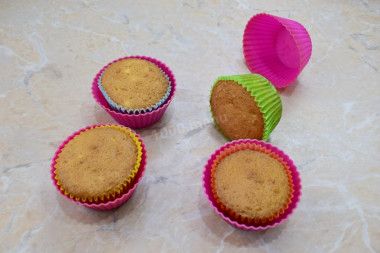
Cupcakes will turn golden. Remove the finished cupcakes from the silicone mold and leave to cool, putting them on their side. If desired, you can remove a little core in the cupcakes and fill them with a delicious filling.
Step 9:
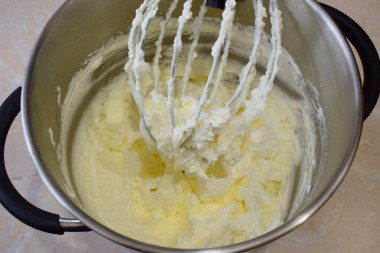
To make the cream, combine the heavy cream with powdered sugar and whisk into a fluffy, stable cream. The finished cream can be painted with food dyes in any color.
Step 10:
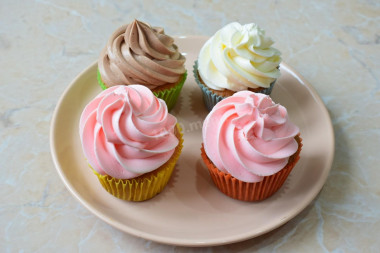
Using a pastry bag, put the cream on the cupcakes, forming a cap. You can decorate cupcakes with melted chocolate, any berries, nuts or sugar sprinkles.
Step 11:
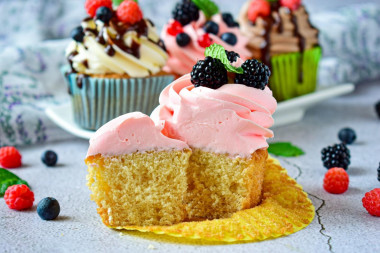
You can immediately help yourself or put it in the refrigerator. so that the cream freezes a little. Have a nice tea party!
When the top layer of baking is slightly browned, check it for readiness: pierce it with a wooden skewer in several places, if the skewer comes out dry, then the mold (or baking tray) can be taken out of the oven.
Be sure to wash the eggs before use, since even the seemingly clean shell may contain harmful bacteria. It is best to use food detergents and a brush.
Keep in mind that everyone's ovens are different. The temperature and cooking time may differ from those specified in the recipe. To make any baked dish successful, use useful information about the features of ovens !
Caloric content of the products possible in the composition of the dish
- Whole cow's milk - 68 kcal/100g
- Milk 3.5% fat content - 64 kcal/100g
- Milk 3.2% fat content - 60 kcal/100g
- Milk 1.5% fat content - 47 kcal/100g
- Concentrated milk 7.5% fat content - 140 kcal/100g
- Milk 2.5% fat content - 54 kcal/100g
- Chicken egg - 157 kcal/100g
- Egg white - 45 kcal/100g
- Egg powder - 542 kcal/100g
- Egg yolk - 352 kcal/100g
- Ostrich egg - 118 kcal/100g
- Whole durum wheat flour fortified - 333 kcal/100g
- Whole durum wheat flour, universal - 364 kcal/100g
- Flour krupchatka - 348 kcal/100g
- Flour - 325 kcal/100g
- Granulated sugar - 398 kcal/100g
- Sugar - 398 kcal/100g
- Butter 82% - 734 kcal/100g
- Amateur unsalted butter - 709 kcal/100g
- Unsalted peasant butter - 661 kcal/100g
- Peasant salted butter - 652 kcal/100g
- Melted butter - 869 kcal/100g
- Cream 35% - 337 kcal/100g
- Cream 40% - 362 kcal/100g
- Vanillin - 288 kcal/100g
- Powdered sugar - 374 kcal/100g
- Baking soda - 0 kcal/100g
- Food coloring - 0 kcal/100g

